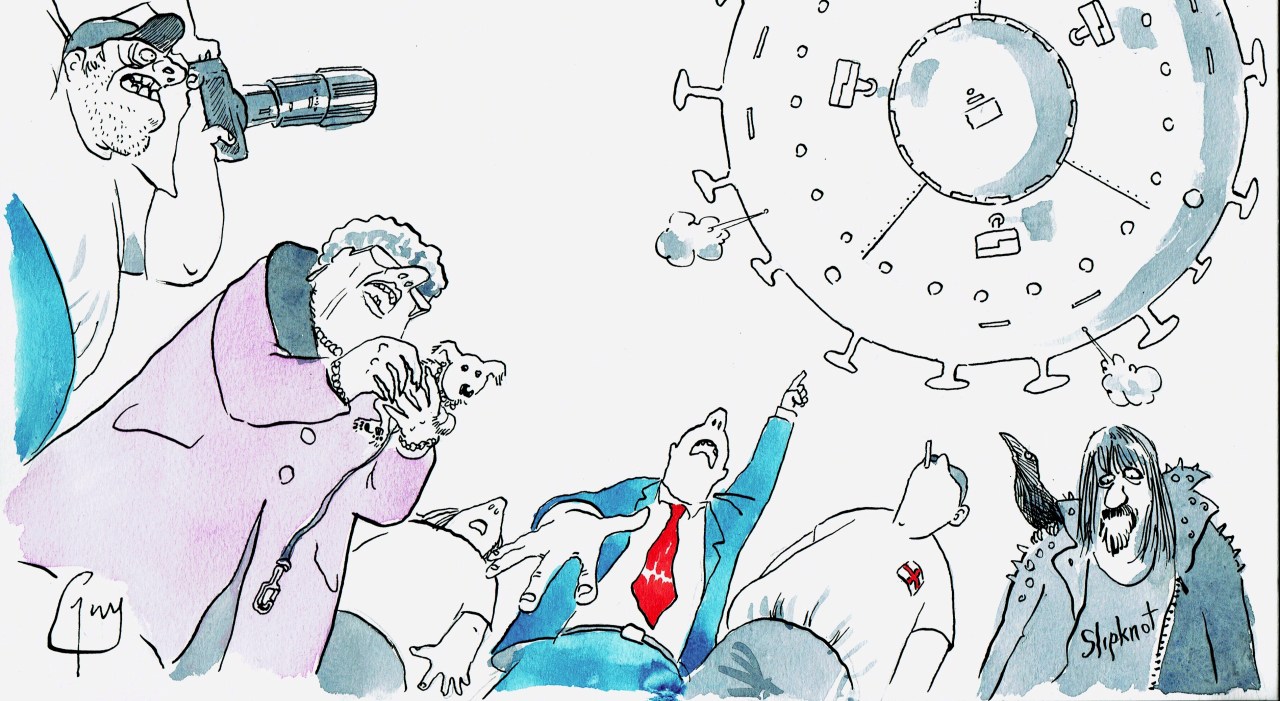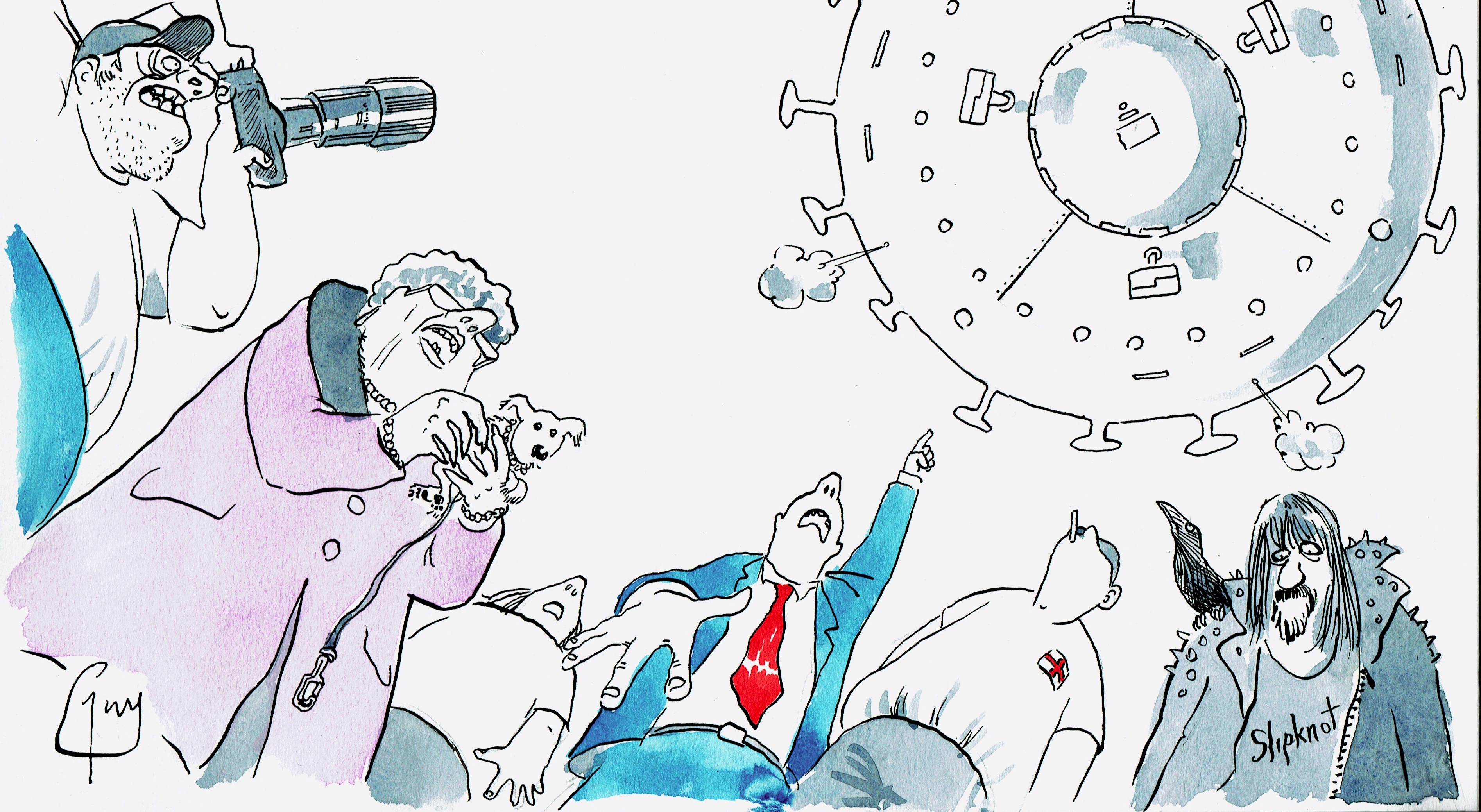In times of great uncertainty – and Eurovision humiliation aside, 2021 surely qualifies – many are tempted to examine ‘speculative fiction’ from the past, to understand the present. 1984 has had a good year, and seems much less dated than anything actually from 1984, such as Wham!, The Karate Kid or Roland Rat. Huxley’s Brave New World is now the standard rebuttal to Orwell – with Forster’s The Machine Stops, in at least a respectable third place. But what of the pulpier end of the market? Those privately educated literary figures were not the only ones peering into the future before The Last War and it can be illuminating to reflect on what visions were hammered out in the actual brave new world of America, on the production line of science fiction periodicals like Astounding!
Literature has no single golden age, but some genre fiction does, and Science Fiction had a long one, stretching from the mid-30s all the way up to the mid 50s – up, perhaps, to Crick and Watson and the genuinely astounding discovery of DNA with which it briefly struggled to compete. Soon, we’d been to the moon too, and the race to speculate before science could accumulate became a lot tighter.
Sci-Fi thrives off society’s sense of the unknown. The fiction of this era is worth reading as much to register the blind spots, as to applaud the bulls’ eyes. These are generally by way of under estimating the societal changes which were to sweep across the West after WW2. Many authors anticipate nuclear annihilation, and subsequent genetic mutation, but there does not appear to be a single one who saw feminism coming.
Instead, stories by Asimov, Heinlein and the like bristle with square jawed 21st century heroes, wise cracking journalists, distracted academics and Blondes, Blondes, Blondes. Some of the predicted innovations in tech are hauntingly accurate, but the action remains firmly rooted in a social milieu Raymond Chandler would recognise. But this is instructive in itself and tells us something about the business of understanding what can, and cannot change, and how quickly. Many people envisaged the rise of a global pandemic at some point in the future but not many paused to consider its social implications – plus ça change.
As with all Sci-Fi, these stories can be enjoyed rather as one might a curious antique pocket watch, not to tell the time, but to see how time was conceived, long ago.
As with all Sci-Fi, these stories can be enjoyed rather as one might a curious antique pocket watch, not to tell the time, but to see how time was conceived, long ago.
A good anthology of this era, well served on Audible, is The Science Fiction Hall of Fame. One or two, I didn’t get on with. Nightfall, by Isaac Asimov, is a stone cold classic, often topping the all-time polls, but I found it ultimately unconvincing. Asimov takes as his premise a quote of Emerson’s, about how, were the stars only to come out once in every thousand years, Mankind would fall down in awe and worship God anew. Asimov imagines a rather more wild-eyed, primal reaction to such a revelation. But I’m with Emerson.
Many more stories stood out and stayed with me. Twilight (by John W Campbell ) is a warning from an elegant Time Traveller who overshoots his exit ramp on the return journey from the distant future. He tells the shmuck he hitches a ride from in 1932, of the coming extinction of Mankind that lies six million years hence. He has good news about 3059AD – his own time – peace, contentment, fully automated luxury communism, even. But consequent on this delegation of all the hard work to machinery, Man atrophies, declines and fades into redundancy. The prose maybe less Augustan but this vision is an early iteration of CS Lewis’s in The Abolition of Man – and was published ten years before that acknowledged masterpiece.
Mimsy Were The Borogoves (by Lewis Padgett) is a lighter, more whimsical proposition. A precocious pair of all American children suddenly find themselves in receipt of some magical toys beamed back in time by mistake. The father, though no slouch on the engineering front, finds himself mystified and somewhat irritated by the non-Euclidean geometry of the toy abacus. His son and daughter however are – of course! – still young enough to adapt to its implications. But it takes the coded messages, hidden in one of their nursery rhymes – you can probably guess from the title which one – penned by a earlier recipient of the same temporally-errant toys, to enable them to unlock the final potential of the gadgets.
I had read the full-length novel that grew out of Flowers for Algernon but as is often the case, I think the original short story is pound for pound the better form. It’s an acknowledged classic in America, a kind of sci-fi Mockingbird, but not so much in the UK and if you haven’t come across it before you might be surprised to find just what an emotional punch it packs. It is the story of good natured but dim Charlie, and is in the form of his self-penned ‘progris riports’ as he is selected for experimental brain surgery and finds himself briefly elevated to become a modern day Goethe, a universal genius, able to grasp the world in all its dizzying complexity.
But while his command of languages, physics and his own predicament soar, he is if anything even less able to make meaningful connections with his fellows, before he completes the parabola of his descent. It is one of the most heart-breaking stories I know in any genre, let alone one more usually concerned with The Cold Equations than the human heart. It’s beautifully read, too. I defy you not to desire a little time to collect your thoughts by the end.
It’s a Good Life, by Jerome Bixby, is one of the most utterly terrifying and disturbing stories I’ve ever read. I’m not at all sure it’s sci-fi: there is no science in it that I can see, in fact a good deal less than there is in normal life. There isn’t even a spurious reference to an explosion at the chemical plant or a strange asteroid out in the cornfields, to explain why little Anthony was born the way he was. But when we meet him, at the age of three, he has the powers of a god, all commanded with the emotional stability of a regular infant.
The effect this has on those who live around him, as he imposes his childish caprice on the world – no worse or more malign than any other boy of his age, only with unlimited agency – is depicted with a cool detachment that contrasts with the horror of the scenario to great effect. It’s a Good Life is one of the shortest stories in the book and there isn’t a moment wasted, so to summarise it any further would be trampling on the roses.
There are 26 stories in the collection every one is worth your time, in print or on Audible. Even those whose subtext and speculations don’t quite survive into the 21st Century intact, trigger some interesting reflections as to why that might be. And not one outstayed its welcome.
And so with a couple of light taps of stylus on my phone screen, I file my copy via 5G, while my train continues to grind its way up the solid iron tracks, into The Smoke.







Comments